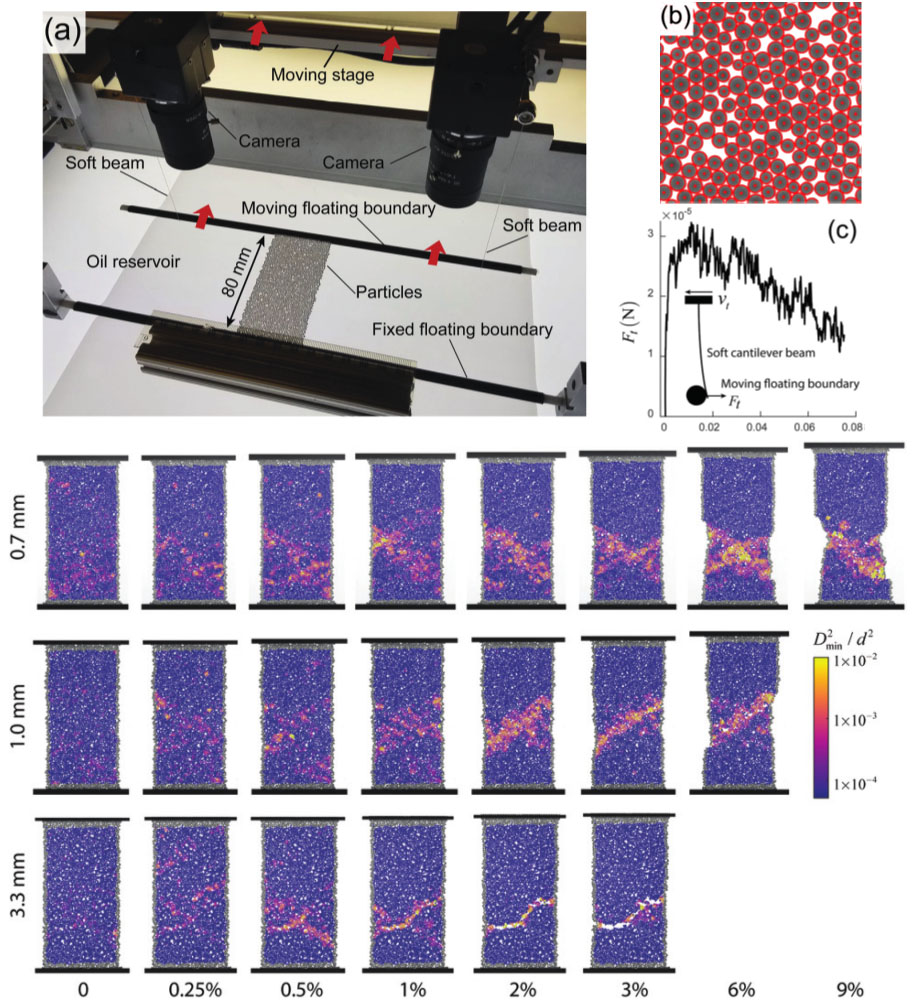 The long-standing goal of increasing material toughness and decreasing brittle failure is elusive in part due to lack of model experimental systems in which ductility can be tuned while observing both macro- and micro-scale response of the constituent “atoms”. We have now created such a system, as illustrated, where ductility is tuned by adjusting the size of floating particles relative to the range of their capillary-cohesion, and where all particles are tracked with high precision while the system is subjected to tensile strain under measured force [1]. The tuning scheme is akin to modifying the sharpness of the minimum in the Lennard-Jones pair potential for oligomeric polymers in a simulated nanopillar [2]. These systems now serve as a crucial testing ground for the development of a new generation of models, which combine Machine Learning characterization of local structure into a classic elastoplastic modeling approach [3,4,5].
The long-standing goal of increasing material toughness and decreasing brittle failure is elusive in part due to lack of model experimental systems in which ductility can be tuned while observing both macro- and micro-scale response of the constituent “atoms”. We have now created such a system, as illustrated, where ductility is tuned by adjusting the size of floating particles relative to the range of their capillary-cohesion, and where all particles are tracked with high precision while the system is subjected to tensile strain under measured force [1]. The tuning scheme is akin to modifying the sharpness of the minimum in the Lennard-Jones pair potential for oligomeric polymers in a simulated nanopillar [2]. These systems now serve as a crucial testing ground for the development of a new generation of models, which combine Machine Learning characterization of local structure into a classic elastoplastic modeling approach [3,4,5].
[1] H. Xiao, R. Ivancic*, D.J. Durian, Soft Matter 16, 8226 (2020).
[2] E. Lin and R.A. Riggleman, Soft Matter 15, 6589 (2019).
[3] G. Zhang, S. Ridout, A.J. Liu, arXiv:2009.11414
*PhD student of R. A. Riggleman